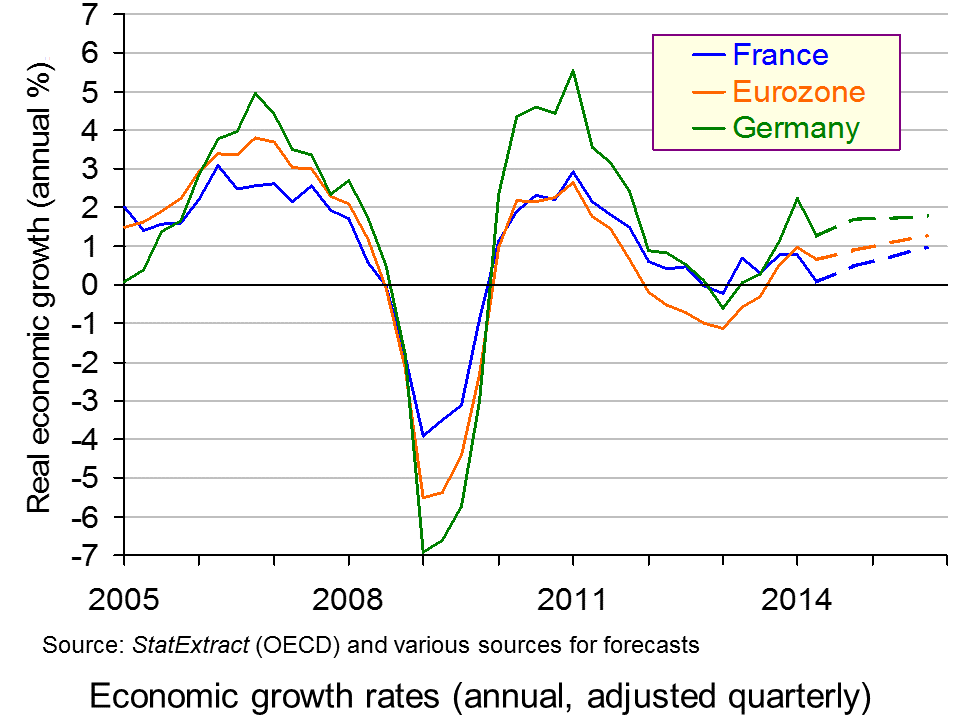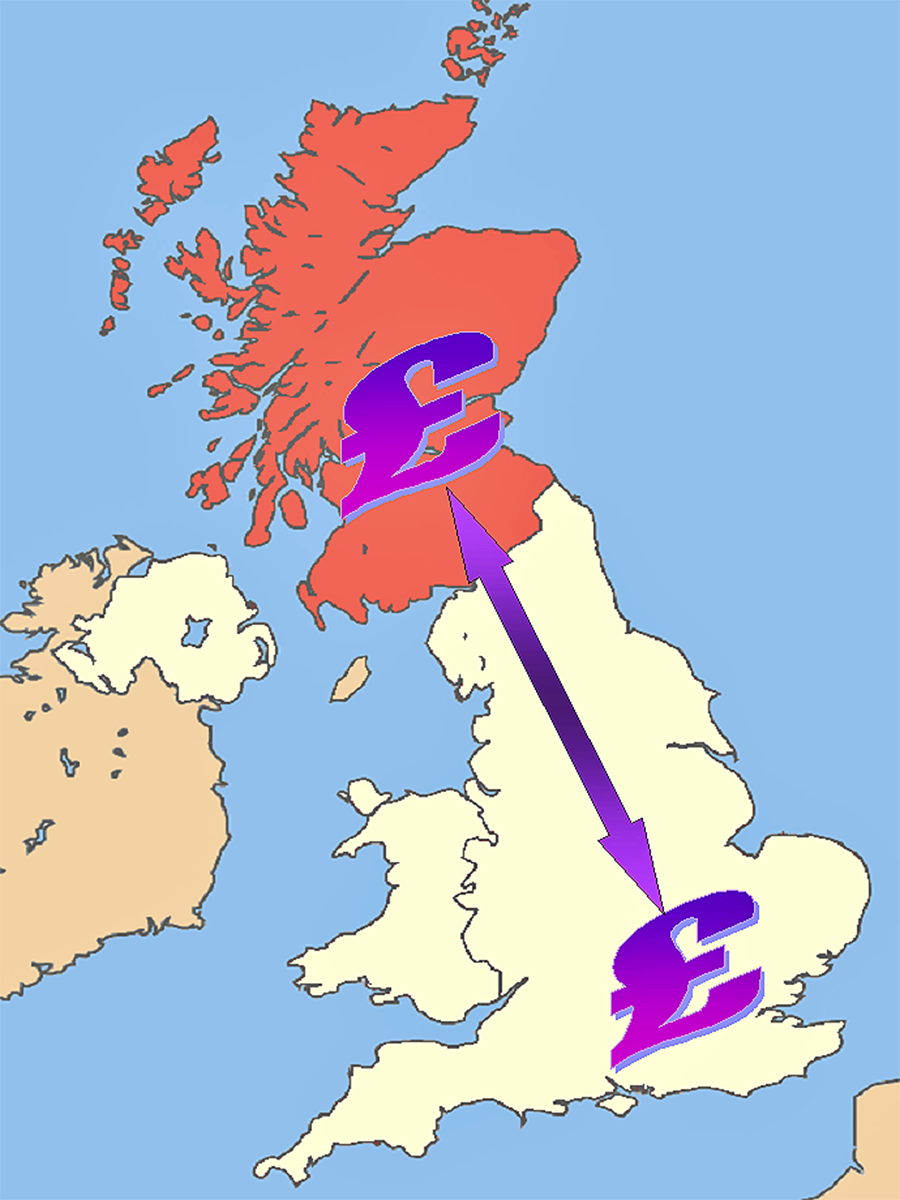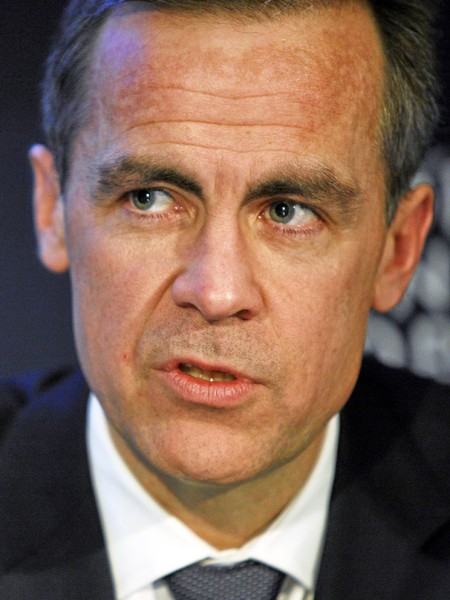 After Syriza’s dramatic victory in the Greek election, it is now seeking to pursue its manifesto promises of renegotiating the terms of Greece’s bailout and bringing an end to austerity policies.
After Syriza’s dramatic victory in the Greek election, it is now seeking to pursue its manifesto promises of renegotiating the terms of Greece’s bailout and bringing an end to austerity policies.
The bailout of €240bn largely involved debt restructuring to give Greeks more time to pay. A ‘haircut’ (reduction) on privately held bonds, estimated to be somewhere between €50bn and €110bn, was more than offset by an increase of €130bn in loans granted by official creditors.
The terms of the bailout negotiated with the ‘Troika’ of the EU Commission, the ECB and the IMF, had forced the previous Greek government to make substantial fiscal adjustments. These have included large-scale cuts in government expenditure (including public-sector wages), increases in taxes, charges and fares, and selling state assets through an extensive programme of privatisation.
Although Greece is now regarded as having achieved a structural budget surplus (a surplus when the economy is operating at potential output: i.e. with a zero output gap),  the austerity policies and a decline in inward investment have dampened the economy so much that, until last year, the actual budget deficit and public-sector debt continued to rise as tax revenues plummeted.
the austerity policies and a decline in inward investment have dampened the economy so much that, until last year, the actual budget deficit and public-sector debt continued to rise as tax revenues plummeted.
Since 2007, GDP has fallen by nearly 27% and the unemployment rate is around 26%. The fall in GDP has made the achievement of a reduction in the debt/GDP ratio that much harder. General government debt has risen from 103% of GDP in 2007 to 176% in 2014, and the budget deficit, although having peaked at 12.2% of GDP in 2013, has only been brought down through huge cuts.
As a report to the European Parliament from the Economic Governance Support Unit argues on page 27:
With less front-loaded fiscal adjustment, the EU-IMF financing envelope for Greece would have needed to expand, in what is already the largest financial assistance programme in percent of GDP in recent global history. On the other hand, a less rapid fiscal adjustment may have helped to preserve some of the productive capacity that, in the course of the adjustment, was destroyed.
The new government, although pledging not to default on debt, is insistent on renegotiating the debt and wants to achieve a high level of rescheduling and debt forgiveness. As the new Prime Minister, Alexis Tsipras, says:
On existing loans, we demand repayment terms that do not cause recession and do not push the people to more despair and poverty. We are not asking for new loans; we cannot keep adding debt to the mountain.
But, just as the Greek government is insistent on renegotiating its debt, so the German government and others in the EU are insisting that Greece sticks to the terms of the bailout and carries on with its current programme of debt reduction. Another haircut, they maintain, is out of the question.
We must wait to see how the negotiations play out. We are in the realms of game theory with various possible threats and promises on either side. It will be interesting to how these threats and promises are deployed.
New Leader in Greece Now Faces Creditors New York Times, Liz Alderman (26/1/15)
Syriza’s historic win puts Greece on collision course with Europe The Guardian, Ian Traynor and Helena Smith (26/1/15)
Greece Q&A: what now for Syriza and EU austerity? The Guardian, Phillip Inman (26/1/15)
Greek elections: Syriza gives eurozone economic headache BBC News, Prof Dimitri Mardas (26/1/15)
How a Syriza government would approach the eurozone The Telegraph, Andrew Lilico (19/1/15)
Australian economists urge Greek debt forgiveness as Syriza election win looks likely ABC News, Michael Janda (26/1/15)
Will Syriza win rock the global economy? CBS News, Nick Barnets (26/1/15)
Syriza should ignore calls to be responsible Irish Times. Paul Krugman (27/1/15)
Syriza Victory in Greek Election Roils European Debate Over Austerity Wall Street Journal, Marcus Walker (25/1/14)
Greece markets hit by debt default fears BBC News (28/1/15)
Why Europe Will Cave to Greece Bloomberg, Clive Crook (29/1/15)
Greece and the euro: Take the money and run The Economist, Buttonwood (28/1/15)
Tanking markets send dire warning to Greece’s new government Fortune, Geoffrey Smith (28/1/15)
The biggest debt write-offs in the history of the world The Telegraph, Mehreen Khan (2/2/15)
Questions
- Why has Greek debt continued to rise despite extremely tight fiscal policy?
- How is the structural deficit defined? What difficulties arise in trying to measure its size?
- Would there have been any way of substantially reducing the Greek budget deficit without driving Greece into a deep recession?
- What are the arguments for and against cancelling a large proportion of Greek debt? Is there a moral hazard involved here?
- Will the recently announced ECB quantitative easing programme help to reduce Greece’s debt?
- Are negotiations about debt forgiveness a zero sum game? Explain.
- What are the likely impacts of the Syriza victory on the global economy?
 Since coming to office two years ago, Shinzo Abe’s government has been determined to revive the Japanese economy. The policy has involved ‘three arrows‘: expansionary fiscal policy, expansionary monetary policy and supply-side reforms. But figures just out show that the Japanese economy is back in recession. The economy shrank by 0.4% in quarter 3, having shrunk by 1.9% in quarter 2.
Since coming to office two years ago, Shinzo Abe’s government has been determined to revive the Japanese economy. The policy has involved ‘three arrows‘: expansionary fiscal policy, expansionary monetary policy and supply-side reforms. But figures just out show that the Japanese economy is back in recession. The economy shrank by 0.4% in quarter 3, having shrunk by 1.9% in quarter 2.
This has come as a huge disappointment for Mr Abe, who has staked his political reputation on escaping from deflation and achieving sustained economic growth. In response, he has called a general election to put a revised economic plan to the electorate.

The main cause of the reversal into recession has been an increase in the sales tax on all goods, which has dampened spending. The tax rise, planned by the previous government, was to help reduce the deficit and start tackling the huge public-sector debt, which, at over 230% of GDP, is by far the highest in the developed world. Another rise in sales tax is due in October 2015 – from 8% to 10%. Mr Abe hopes to cancel the rise and it is this that he may put to the electorate.
So what is the outlook for Japan? Will quarter 4 show economic growth, or will pessimism have set in? Will the Bank of Japan introduce even more quantitative easing, or will it wait for the latest increase in QE to take effect (see the blog post, All eased out: at least for the USA and UK)?
The following articles look at the implications of the latest news, both for Japan and globally, and at the options for the government and central bank.
Articles
Japanese economy falls into surprise recession Independent, Maria Tadeo (17/11/14)
Japan’s economy makes surprise fall into recession BBC News (17/11/14)
Coming to a crunch: Time is running out for Abenomics The Economist (20/11/14)
Japan’s economy: Delay the second consumption tax hike The Economist (17/11/14)
Defying Expectations, Japan’s Economy Falls Into Recession New York Times, Jonathan Soble (16/11/14)
Japan shocks as economy slips into recession CNBC, Li Anne Wong (17/11/14)
Japan Unexpectedly Enters Recession as Abe Weighs Tax: Economy Bloomberg, Keiko Ujikane and Toru Fujioka (17/11/14)
The world should be wary: Japan’s economic woes are contagious The Guardian, Larry Elliott (17/11/14)
Why is Japan heading to the polls? BBC News (18/11/14)
Previous news items on this site
A new economic road for Japan? (January 2013)
A J-curve for Japan? (May 2013)
Japan’s three arrows (June 2013)
Abenomics – one year on (December 2013)
Japan’s recovery (January 2014)
Japan’s CPI: An Update (May 2014)
All eased out: at least for the USA and UK (November 2014)
Data
Quarterly Estimates of GDP Japanese Cabinet Office
Japan and the IMF IMF Country Reports
Economic Outlook Annex Tables OECD
Questions
- Give details of the Japanese government’s three arrows.
- Discuss the pros and cons of the rise in the sales tax. Is it possible for the rise in the sales tax to increase the size of the public-sector deficit?
- What have been the effects of Japanese government policies on (a) prices of goods and services; (b) living standards; (c) asset prices?
- Who have been the gainers and losers of the policies?
- How is the Japanese situation likely to effect the value of the yen? How is this, in turn, likely to affect its trading partners? Could this set off a chain reaction?
 The French economy is flatlining. It has just recorded the second quarter of zero economic growth, with growth averaging just 0.02% over the past 12 months. What is more, the budget deficit is rising, not falling. In April this year, the French finance minister said that the deficit would fall from 4.3% in 2013 to 3.8% in 2014 and to the eurozone ceiling of 3% in 2015. He is now predicting that it will rise this year to 4.4% and not reach the 3% target until 2017.
The French economy is flatlining. It has just recorded the second quarter of zero economic growth, with growth averaging just 0.02% over the past 12 months. What is more, the budget deficit is rising, not falling. In April this year, the French finance minister said that the deficit would fall from 4.3% in 2013 to 3.8% in 2014 and to the eurozone ceiling of 3% in 2015. He is now predicting that it will rise this year to 4.4% and not reach the 3% target until 2017.
The deficit is rising because a flatlining economy is not generating sufficient tax revenues. What is more, expenditure on unemployment benefits and other social protection is rising as unemployment has risen, now standing at a record 10.3%.

And it is not just the current economic situation that is poor; the outlook is poor too. The confidence of French companies is low and falling, and investment plans are muted. President Hollande has pledged to cut payroll taxes to help firms, but so far this has not encouraged firms to invest more.
So what can the French government do? And what can the EU as a whole do to help revive not just the French economy but most of the rest of the eurozone, which is also suffering from zero, or near zero, growth?
There are two quite different sets of remedies being proposed.

The first comes from the German government and increasingly from the French government too. This is to stick to the austerity plans: to get the deficit down; to reduce the size of government in order to prevent crowding out; and to institute market-orientated supply-side policies that are business friendly, such as reducing business regulation. Business leaders in France, who generally back this approach, have called for reducing the number of public holidays and scrapping the maximum 35-hour working week. They are also seeking reduced business taxes, financed by reducing various benefits.
Increasingly President Hollande is moving towards a more business-friendly set of policies. Under his government’s ‘Responsibility Pact’, a €40 billion package of tax breaks for business will be financed through €50 billion of cuts in public spending. To carry through these policies he has appointed an ex-investment banker, Emmanuel Macron, as economy minister. He replaces Arnaud Montebourg, who roundly criticised government austerity policy and called for policies to boost aggregate demand.

This brings us to the alternative set of remedies. These focus on stimulating aggregate demand through greater infrastructure investment and cutting taxes more generally (not just for business). The central argument is that growth must come first and that this will then generate the tax revenues and reductions in unemployment that will then allow the deficit to be brought down. Only when economic growth is firmly established should measures be taken to cut government expenditure in an attempt to reduce the structural deficit.
There are also compromise policies being proposed from the centre. These include measures to stimulate aggregate demand, mainly through tax cuts, accompanied by supply-side policies, whether market orientated or interventionist.

As Europe continues to struggle to achieve recovery, so the debate is getting harsher. Monetary policy alone may not be sufficient to bring recovery. Although the ECB has taken a number of measures to stimulate demand, so far they have been to little avail. As long as business confidence remains low, making increased liquidity available to banks at interest rates close to zero will not make banks more willing to lend to business, or businesses more willing to borrow. Calls for an end, or at least a temporary halt, to austerity are thus getting louder. At the same time, calls for sticking to austerity and tackling excessive government spending are also getting louder.
Articles
Hollande entrusts French economy to ex-banker Macron Reuters, Ingrid Melander and Jean-Baptiste Vey (26/8/14)
France’s new Minister of the Economy Emmanuel Macron described by left-wingers as a ‘copy-and-paste Tony Blair’ Independent, John Lichfield (28/8/14)
Merkel praises France’s economic reform plans after Berlin talks with PM Valls Deutsche Welle (22/9/14)
French economy flat-lines as business activity falters Reuters, Leigh Thomas (23/9/14)
French public finances: Rétropédalage The Economist (13/9/14)
French employer group urges ‘shock therapy’ for economy Reuters (24/9/14)
Last chance to save France: loosen 35-hour week and cut public holidays, say bosses The Telegraph (24/9/14)
‘Sick’ France’s economy is stricken by unemployment ‘fever’ The Telegraph (17/9/14)
France’s economics ills worsen but all remedies appear unpalatable The Observer, Larry Elliott and Anne Penketh (31/8/14)
The Fall of France The New York Times, Paul Krugman (28/8/14)
Why Europe is terrified of deflation Salon, Paul Ames (20/9/14)
Europe’s Greater Depression is worse than the 1930s The Washington Post, Matt O’Brien (14/8/14)
Worse than the 1930s: Europe’s recession is really a depression The Washington Post, Matt O’Brien (20/8/14)
Eurozone business growth slows in September, PMI survey finds BBC News (23/9/14)
Europe must ‘boost demand’ to revive economy, US warns BBC News (21/9/14)
Valls says France would never ask Germany to solve its problems Reuters, Annika Breidthardt and Michelle Martin (23/9/14)
The euro-zone economy: Asset-backed indolence The Economist (11/9/14)
Data
Annual macro-economic database (AMECO) Economic and Financial Affairs DG, European Commission
Business and Consumer Surveys Times Series Economic and Financial Affairs DG, European Commission
StatExtracts OECD
Statistics database European Central Bank
Questions
- What types of supply-side reforms would be consistent with the German government’s vision of solving Europe’s low growth problem?
- How could a Keynesian policy of reflation be consistent with getting France’s deficit down to the 3% of GDP limit as specified in the Stability and Growth Pact (see)?
- What is meant by (a) financial crowding out and (b) resource crowding out? Would reflationary fiscal policy in France lead to either form of crowding out? How would it be affected by the monetary stance of the ECB?
- Give examples of market-orientated and interventionist supply-side policies.
- What is meant by the terms ‘cyclical budget deficit’ and ‘structural budget deficit’. Could demand-side policy affect the structural deficit?
- Using the European Commission’s Business and Consumer Surveys find our what has happened to business and consumer confidence in France over the past few months.
- How important is business and consumer confidence in determining economic growth in (a) the short term and (b) the long term?
 In a speech in Edinburgh, Mark Carney, Governor of the Bank of England, considered the implications of Scotland retaining the pound if the Scottish people vote yes for independence. His speech was intended to be non-political. Rather he focused on two main questions: first whether a currency union of Scotland and the rest of the UK (RUK) would be an optimal currency area; second how much economic sovereignty would need to be shared with RUK as a consequence of Scotland keeping the pound.
In a speech in Edinburgh, Mark Carney, Governor of the Bank of England, considered the implications of Scotland retaining the pound if the Scottish people vote yes for independence. His speech was intended to be non-political. Rather he focused on two main questions: first whether a currency union of Scotland and the rest of the UK (RUK) would be an optimal currency area; second how much economic sovereignty would need to be shared with RUK as a consequence of Scotland keeping the pound.
On the first question, Mark Carney argued that the current UK is close to an optimal currency area as there is a high degree of economic integration and factor mobility. Sharing a currency eliminates exchange costs, improves pricing transparency and hence encourages competition, promotes cross-border investment, improves the flow of technology and ideas, and increases the mobility of labour and capital.
But sharing a currency involves sharing a monetary policy. This would still be determined by the Bank of England and would have to geared to the overall economic situation of the union, not the specific needs of Scotland.
There would also need to be a banking union, whereby banks in difficulties would receive support from the whole currency area. In Scotland’s case, banking accounts for a very large proportion of the  economy (12.5% compared with 4.3% for RUK) and could potentially place disproportionate demands on the currency union’s finances.
economy (12.5% compared with 4.3% for RUK) and could potentially place disproportionate demands on the currency union’s finances.
And then there is the question of fiscal policy. A shared currency also means pooling a considerable amount of sovereignty over taxation, government spending and government debt. This could be a serious problem in the event of asymmetric shocks to Scotland and RUK. For example, if oil prices fell substantially, Scotland may want to pursue a more expansionary fiscal policy just at a time when its tax revenues were falling. This could put a strain on Scotland’s finances. This might then require RUK to provide support from a common pool of funds, such as a ‘regional fund’.
Being in a currency union can amplify fiscal stress, and increase both the risks and consequences of financial instability. In the situation just described [a fall in demand for exports], fiscal policy would ideally help smooth adjustment to the external shock. But its ability to do so could be limited by the budgetary impact of the falls in output, prices and wages. To maintain credibility, fiscal policy may even become pro-cyclical, with the resulting austerity exacerbating the initial fall in demand. In the extreme, adverse fiscal dynamics could call into question a country’s membership of the union, creating the possibility of self-fulfilling ‘runs’ on bank and sovereign debt absent central bank support.6 Such adverse feedback loops turned recessions into depressions in several European countries in recent years.
A separate Scottish currency, by contrast, would, according to Carney, be a valuable shock absorber if domestic wages and prices were sticky.
For example, suppose demand for a country’s exports falls. All else equal, its output will fall, unemployment increase and current account deteriorate. With an independent currency, exchange rate depreciation can dampen these effects by improving competitiveness, and monetary policy can become more accommodative, supporting demand and employment. However, if the country were part of a currency area with its foreign market, its exchange rate would by definition not change, putting the full weight of adjustment on wages and unemployment – a significantly more protracted and painful process. In addition, the responsiveness of monetary policy to weak demand in that country would be diluted by the needs of the broader membership.
But despite the problems of ceding a degree of monetary and fiscal sovereignty, Scotland and RUK are well placed to continue with a successful currency union if Scotland becomes independent. Economic conditions are very similar, as are language, culture and institutions, and there is an effective banking union – assuming such a banking union were to continue post independence.
The existing banking union between Scotland and the rest of the United Kingdom has proved durable and efficient. Its foundations include a single prudential supervisor maintaining consistent standards of resilience, a single deposit guarantee scheme backed by the central government, and a common central bank, able to act as Lender of Last Resort across the union, and also backed by the central government. These arrangements help ensure that Scotland can sustain a banking system whose collective balance sheet is substantially larger than its GDP.
The desirability of Scottish independence is a normative question for the Scottish electorate to decide. Nevertheless, economists have an important part to play in informing the debate. Mark Carney’s economic analysis of currency union if the Scottish electorate votes yes is a good example of this.
Video of speech
 Speech at lunch hosted by the Scottish Council for Development & Industry, Edinburgh Bank of England, Mark Carney (29/1/14)
Speech at lunch hosted by the Scottish Council for Development & Industry, Edinburgh Bank of England, Mark Carney (29/1/14)
Text of speech
The economics of currency unions Bank of England, Mark Carney (29/1/14)
Articles, podcasts and webcasts
Independent Scotland would be forced to cede some sovereignty if it keeps pound, says Carney The Telegraph, Szu Ping Chan (29/1/14)
Scottish independence: Currency debate explained BBC News, Andrew Black (29/1/14)
Scottish independence: Key extracts from Mark Carney speech BBC News (29/1/14)
 Scottish independence: Carney says Scots currency plan may lead to power loss BBC News (29/1/14)
Scottish independence: Carney says Scots currency plan may lead to power loss BBC News (29/1/14)
The sterling price of Scottish independence BBC News, Robert Peston (29/1/14)
Independent Scotland ‘needs to cede sovereignty’ for currency union with UK The Guardian, Severin Carrell (29/1/14)
Mark Carney warns Scotland over currency union hopes Financial Times, Mure Dickie and Sarah O’Connor (29/1/14)
 How independent would Scotland really be? Channel 4 News (29/1/14)
How independent would Scotland really be? Channel 4 News (29/1/14)
BoE’s Mark Carney in currency sovereignty warning The Scotsman, Tom Peterkin (30/1/14)
Carney Says Scotland Must Heed Euro Crisis in Pound Debate Bloomberg, Emma Charlton and Jennifer Ryan (29/1/14)
 Independent Scotland ‘meets criteria’ for currency union BBC Today Programme, Gordon MacIntyre-Kemp and Iain Gray (29/1/14)
Independent Scotland ‘meets criteria’ for currency union BBC Today Programme, Gordon MacIntyre-Kemp and Iain Gray (29/1/14)
Scotland must play a high-stakes poker game with Westminster over the pound The Guardian Larry Elliott (12/2/14)
Questions
- What are the conditions necessary for a successful currency union?
- To what extent do Scotland and RUK meet these conditions?
- What are meant by asymmetric shocks? Give some examples of asymmetric shocks that could affect a Scotland–RUK currency union.
- Why is there a potential moral hazard in a whole currency union providing fiscal support to members in difficulties?
- Why is banking union such an important part of a successful currency union? What lessons can be learned here from the eurozone currency union?
- What constraints would currency union impose on Scottish fiscal policy? Would such constraints exist in an optimal currency area?
 It is one year since the election of Shinzo Abe in Japan. He immediately embarked on a radical economic policy to stimulate the Japanese economy, which had suffered from years of stagnation. There have been three parts (or three arrows) to his policy: fiscal policy and monetary policy to stimulate aggregate demand and supply-side policy to increase productivity.
It is one year since the election of Shinzo Abe in Japan. He immediately embarked on a radical economic policy to stimulate the Japanese economy, which had suffered from years of stagnation. There have been three parts (or three arrows) to his policy: fiscal policy and monetary policy to stimulate aggregate demand and supply-side policy to increase productivity.
As the previous post explains:
 “The first arrow is monetary policy. The Bank of Japan has engaged in extensive quantitative easing through bond purchases in order to drive down the exchange rate (see A J-curve for Japan?), stimulate expenditure and increase the rate of inflation. A target inflation rate of 2% has been set by the Bank of Japan. Part of the problem for the Japanese economy over the years has been stagnant or falling prices. Japanese consumers have got used to waiting to spend in the hope of being able to buy at lower prices. Similarly, Japanese businesses have often delayed stock purchase. By committing to bond purchases of whatever amount is necessary to achieve the 2% inflation target, the central bank hopes to break this cycle and encourage people to buy now rather than later.
“The first arrow is monetary policy. The Bank of Japan has engaged in extensive quantitative easing through bond purchases in order to drive down the exchange rate (see A J-curve for Japan?), stimulate expenditure and increase the rate of inflation. A target inflation rate of 2% has been set by the Bank of Japan. Part of the problem for the Japanese economy over the years has been stagnant or falling prices. Japanese consumers have got used to waiting to spend in the hope of being able to buy at lower prices. Similarly, Japanese businesses have often delayed stock purchase. By committing to bond purchases of whatever amount is necessary to achieve the 2% inflation target, the central bank hopes to break this cycle and encourage people to buy now rather than later.
 The second arrow is fiscal policy. Despite having the highest debt to GDP ratio in the developed world, Japan is embarking on a large-scale programme of infrastructure investment and other public works. The package is worth over $100bn. The expansionary fiscal policy is accompanied by a longer-term plan for fiscal consolidation as economic growth picks up. In the short term, Japan should have no difficulty in financing the higher deficit, given that most of the borrowing is internal and denominated in yen.
The second arrow is fiscal policy. Despite having the highest debt to GDP ratio in the developed world, Japan is embarking on a large-scale programme of infrastructure investment and other public works. The package is worth over $100bn. The expansionary fiscal policy is accompanied by a longer-term plan for fiscal consolidation as economic growth picks up. In the short term, Japan should have no difficulty in financing the higher deficit, given that most of the borrowing is internal and denominated in yen.
 The third arrow is supply-side policy. On 5 June, Shinzo Abe unveiled a series of goals his government would like to achieve in order to boost capacity and productivity. These include increasing private-sector investment (both domestic and inward), infrastructure expenditure (both private and public), increasing farmland, encouraging more women to work by improving day-care facilities for children, and deregulation of both goods, capital and labour markets. The prime minister, however, did not give details of the measures that would be introduced to achieve these objectives. More details will be announced in mid-June.”
The third arrow is supply-side policy. On 5 June, Shinzo Abe unveiled a series of goals his government would like to achieve in order to boost capacity and productivity. These include increasing private-sector investment (both domestic and inward), infrastructure expenditure (both private and public), increasing farmland, encouraging more women to work by improving day-care facilities for children, and deregulation of both goods, capital and labour markets. The prime minister, however, did not give details of the measures that would be introduced to achieve these objectives. More details will be announced in mid-June.”
In the webcast and article below, Linda Yueh, the BBC’s Chief Business Correspondent, considers how effective the policies are proving and the challenges that remain.
Webcast
 Has Abenomics fixed Japan’s economic fortunes? BBC News, Linda Yueh (16/12/13)
Has Abenomics fixed Japan’s economic fortunes? BBC News, Linda Yueh (16/12/13)
Articles
Why Abenomics holds lessons for the West BBC News, Linda Yueh (13/12/13)
Japanese business confidence hits six-year high, Tankan survey shows The Guardian (16/12/13)
Data
World Economic Outlook Database IMF (Oct 2013)
Bank of Japan Statistics Bank of Japan
Economic Outlook Annex Tables OECD
Country statistical profile: Japan 2013 OECD (15/11/13)
Questions
- Demonstrate on (a) an aggregate demand and supply diagram and (b) a Keynesian 45° line diagram the effects of the three arrows (assuming they are successful) in meeting their objectives.
- Why has Japan found it so hard to achieve economic growth over the past 20 years?
- How has the Japanese economy performed over the past 12 months?
- What lessons can be learnt by the UK and eurozone countries from Japan’s three arrows?
- Why is the second arrow problematic, given the size of Japan’s general government debt? Does the proportion of Japanese debt owed overseas affect the argument?
- In what ways do the three arrows (a) support each other; (b) conflict with each other?
- Why is the structure of the labour market in Japan acting as a break on economic growth? What policies are being, or could be, pursued to tackle these structural problems?
 After Syriza’s dramatic victory in the Greek election, it is now seeking to pursue its manifesto promises of renegotiating the terms of Greece’s bailout and bringing an end to austerity policies.
After Syriza’s dramatic victory in the Greek election, it is now seeking to pursue its manifesto promises of renegotiating the terms of Greece’s bailout and bringing an end to austerity policies. the austerity policies and a decline in inward investment have dampened the economy so much that, until last year, the actual budget deficit and public-sector debt continued to rise as tax revenues plummeted.
the austerity policies and a decline in inward investment have dampened the economy so much that, until last year, the actual budget deficit and public-sector debt continued to rise as tax revenues plummeted.












